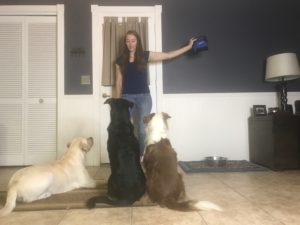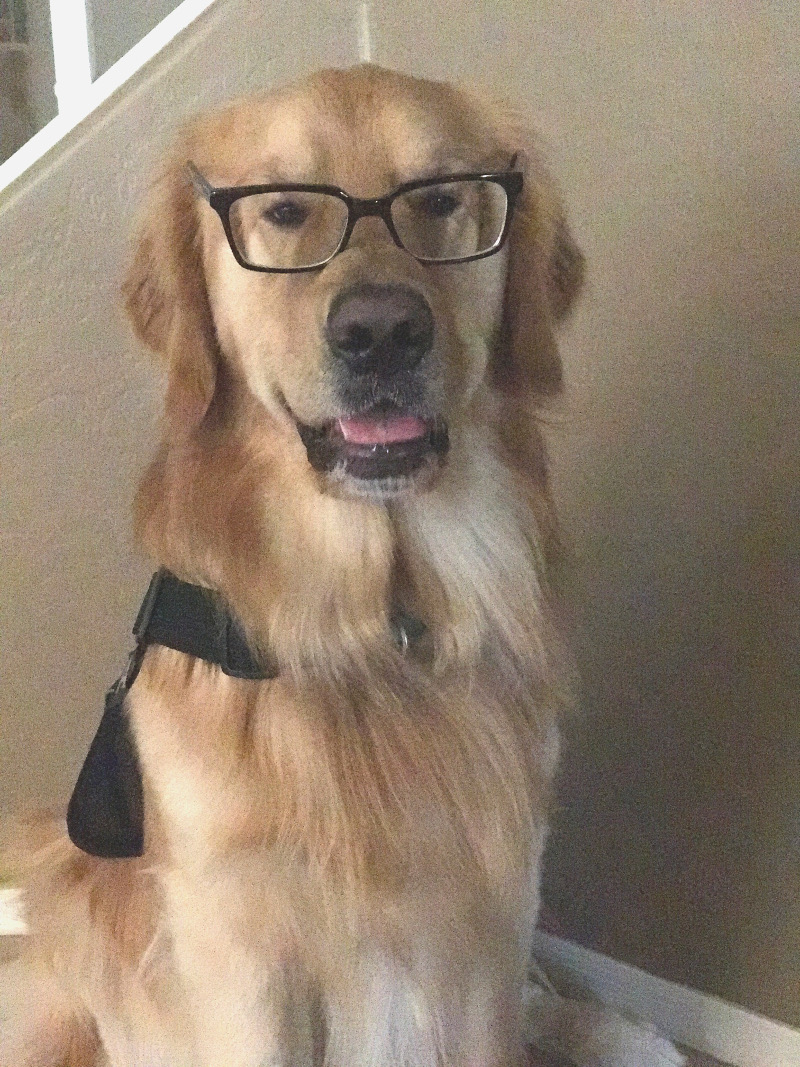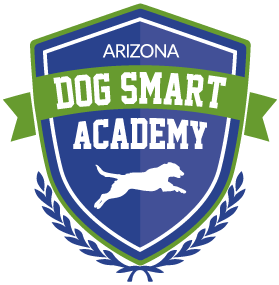
Proofing Your Dog
I see dog owners struggle with their dog’s behaviors and reactions on a regular basis. These owners often look at my dog and say things like, “if only I was a dog trainer and I could make my dogs act like yours.” You want to know what really sets my dog and his training apart from the average pet? I call it proofing.
What is proofing?
For me, proofing is the art of introducing distractions to training on purpose. Instead of hoping my dog can hold his down-stay when another dog walks by, I train with that specific goal in mind. I introduce the distraction of another dog in teeny tiny pieces that allows my dog to be successful. I proof his ability to stay with that particular distraction. Repeat the process for everything else.
Proofing sounds time-intensive…
No, not really…It doesn’t take large chunks of time so much as a high rate of consistency over a period of time. What I mean by that is I train for a few minutes several times a day every day. A few minutes really is a few, less than twenty for sure. I do this before I leave for work, again when I get home, and at least once more before bed. I am a dog trainer, so training dogs is kind of my life, but I don’t actually spend every minute of my day with my dogs. My dogs tend to get less training time and attention than my clients, and there are moments when it really shows.
My dogs can usually come when called pretty perfectly, distractions and distance don’t really matter. I hadn’t practiced recalling my Border Collie in a while, and was shocked when she trotted off to say hi to another dog in an off-leash class. Shocked I tell you!
Whose fault was it that she ignored the recall and went to see a distraction? Mine. I knew I hadn’t practiced that behavior in a while and it was one of our first times at AZ Dog Sports with distractions galore. I now have a behavior that needs some more proofing. My Border Collie can only behave as well as my training has prepared her.
Dog Distraction Training … how it’s done
So, let’s pick a behavior and I’ll explain how I would proof it so that the behavior becomes reliable in any setting. How about eye contact? That sometimes dreaded cue that gets us desperate for our dogs to glance in our direction, repeating “watch me”, “look”, or even “treat treat” in some instances. I’ve heard people joke that “look” really means “look anywhere but me” to their dog. We can fix that.
The goal of proofing is to always keep your dog successful. If you believe your dog can’t handle a location or type of distraction, don’t start there. Start someplace where it should be easy-peasey for your dog to get this behavior right every single time. I start inside my house in a room empty of people, pets, and distractions.
My first goal is to get my dog to OFFER the behavior to me. I can cue the behavior initially, but before long my dog should assume I’m wanting more of the same while I make it slightly more difficult. My first distraction is something easy, like reaching a new level in a video game. When my dog is giving me perfect eye contact, I’ll try holding a treat out to my side even with my shoulder or face. Now it’s time to be patient and let my dog figure out the puzzle. Look away from the treat and back to my eyes earns a reward. Next step could be either more duration or start wiggling the treat a little.
Now it’s time to move to another location and start over from the beginning. I rebuild the behavior each time, and I match the level of my reward to how difficult the situation is for my dog. The first time I go into my front yard to practice this behavior I make sure I have really worthwhile rewards mixed into regular kibble and treats. If going into the front yard is too challenging, then I can try training with the front door open or even just near a window with the blinds up.
At some point you need more distractions and the more controlled the distractions are the better. This is where group training classes come into play. Almost every dog trainer I know still takes group lessons with their personal dogs whenever they can. It’s such great practice for real life scenarios and crucial proofing like seeing other dogs.
Did proofing my dog prove to be true?
I went home and worked on my Border Collie’s recall. I had my other dogs practice down stays then called her past them, and practiced calling her when she was in the yard playing. The next time she was off-leash at AZ Dog Sports she was super reliable and well behaved. My training had prepared her for the distractions I needed her to face, and we both had a great time.




